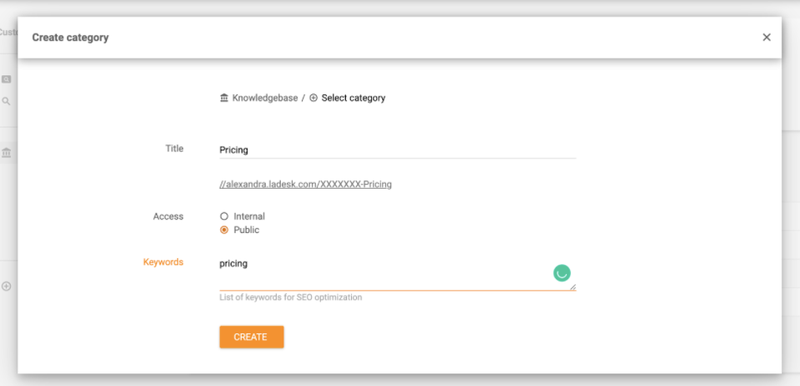How much effort do your customers exert to use your products or services? It’s crucial to know the answer to this question if you want to give them an exceptional customer experience. After all, if using your products or services is such a hassle, they will most likely quit doing it.
What’s more, your customers might post poor reviews online about your product or your company, causing those in their circle of influence to steer clear of your brand.
That’s why many companies endeavor to study the experience customers have with their brands and products. The goal is to make the encounter hassle-free and enjoyable. The more positive experience they have, the more likely they are to buy again and refer your product or service to their network.
So the question becomes, how much effort do your customers exert when interacting with your brand? The answer to this question is your customer effort score (CES).
This guide covers the basics of the CES and its importance and shares a few useful tips and tricks to increase it and improve the customer experience.
Overview: What is the customer effort score?
The CES is one of the critical customer service metrics for measuring the user’s experience with a company’s products and services.
Customers rate their experience on a five-point, or the newer seven-point, scale (CES 2.0). The rating ranges from “Very Easy” to “Very Difficult” on a CES survey. This determines the amount of effort it took a customer to use your product or service and how likely it is they will continue to keep buying from you.

In layman’s terms, the CES measures your customers’ assessment of how difficult or easy it is for them to complete an action with your company. These actions and interactions are not limited to the customer service experience but also involve resolving an issue, buying a product, subscribing to a service, and even navigating your website.
3 benefits of increasing your customer effort score
Essentially, reducing customer effort will help raise your CES and boost customer satisfaction. Here are a few other advantages of improving your CES.
1. It boosts your repurchase rates
Research shows 94% of customers who experience low-effort interactions with brands are most likely to buy again. This means improving your CES increases consumer repurchase.
Low effort can also be a strong indicator of your customers’ future buying behavior, helping you refine your marketing and sales strategies to drive consumer experiences that raise revenue.
2. It improves employee retention
Tracking and measuring CES helps you improve the customer experience. This equips your employees with the information and context they need to deliver better customer interactions, which helps them feel better about their jobs.
When your staff feels satisfied with their work, their intent to remain with your company increases, reducing your attrition rate and potential employee turnover costs.
3. It gets more customer referrals
A higher CES means lower customer effort and better experiences, which increases the chance of satisfied customers referring your brand to their families, friends, and network. This also helps raise customer loyalty and retention.
How to calculate your customer effort score
The CES determines the ease of interaction between your company and the customer. Typically, the CES is deployed in the following scenarios:
• After a customer interaction leading to a purchase.
• Right after an interaction with a customer service representative.
There are three ways to calculate the customer effort score:
Method 1: Easy, difficult, neither
In this method, the customer is asked, “How convenient/easy did we make it for you to address your concern?” The answers offered in this method include easy, difficult, or neither.
Calculating the CES involves measuring the percentage of those who said “easy” subtracted by the percentage of those who answered “difficult.” The result ranges from -100 to 100, so the higher the score, the better.
The simplicity of the questionnaire aims to increase customers’ response rate.
Method 2: Scale of 1 to 7
This method digs deeper into the customer experience by using a numerical scale. The customer is asked, “On a scale of 1 to 7, how easily did the company make it for you to address your issue?” Customers are then given the following options:
1 – Extremely easy
2 – Very easy
3 – Fairly easy
4 – Neither
5 – Fairly difficult
6 – Very difficult
7 – Extremely difficult
Dividing the sum of all individual scores results in a CES from 1 to 7. A lower score indicates better results.
Method 3: Scale of 1 to 5
This method takes a slightly different approach to the question. The customer is asked, “On a scale of 1 to 5, how much effort did you exert to address your issue?” These options are given:
1 – Very low effort
2 – Low effort
3 – Neutral
4 – High effort
5 – Very high effort
Just like Method 2, dividing the sum of all individual scores will result in a CES from 1 to 5. The lower the score, the better the CES.
3 ways to increase your customer effort score
While many factors can affect your CES, such as your customer service technology and tools, strategies, accurate resources, and workforce, there are methods to help enhance it.
Use these tips to improve your CES by delivering seamless and memorable customer experiences.
1. Offer self-service options
Some customers prefer being able to solve their issues on their own rather than getting on the phone and waiting for a customer service representative. Reduce customer effort and improve consumer experiences by providing self-service options, such as how-to articles and walk-through videos.
For example, LiveAgent, a customer service software, lets you create customer portal categories based on your types of customers, services, or products. You can add feedback boards, knowledge base articles, and forums.

The software allows you to create customizable search widgets for your knowledge base to give your customers easy access to the portal.
In a nutshell, a self-service option allows customers to solve issues by themselves quickly and easily, improving your CES and increasing your customer loyalty score.
2. Establish multiple channels for customer feedback and contact
Meeting your customers through a wide array of communication channels can reduce their effort and, thus, increase their satisfaction. That’s why companies make it super easy for their customers to reach their agents and even leave customer reviews.
You do this by offering contact and feedback options through email, call centers, live chat, social media, and other channels your customers prefer using.
The key is to make sure your business delivers excellent customer experiences with every interaction, regardless of the communication channel. Additionally, route customer feedback directly to responsible teams so they can view client comments in real time and address them promptly.
You can also integrate feedback into your internal chat app, customer relationship management (CRM) software, and help desk. This allows you to set up notifications that email your customers’ feedback directly to your reps based on the comment, rating, and other customer data points.
3. Reduce customer response wait times
Prompt issue resolution means your customers won’t need to spend too much time waiting to get their issues fixed. This leads to higher customer satisfaction, better experiences, and, you guessed it, an improved CES score.
Provide better response times using customer service software that stores every customer interaction and conversation. This allows your agents to quickly access your customers’ histories, understand the problem without asking them to repeat their issues, and deliver solutions more efficiently.
When you solve customer issues and queries promptly, clients won’t need to put in too much effort. It also shows that your company values your customers’ time, which helps to put your brand in a positive light.
Start tracking and measuring your CES
The definition of an excellent customer experience is ever-changing due to constantly evolving markets and consumer demands, making it crucial to regularly measure your CES.
Leverage the metric to assess your customers’ perception of the ease your brand provides in its business interactions. This can help improve gaps that prevent your company from providing seamless and excellent customer experiences.
The post A Beginner’s Guide to Your Customer Effort Score appeared first on The blueprint and is written by Jimmy Rodela
Original source: The blueprint


